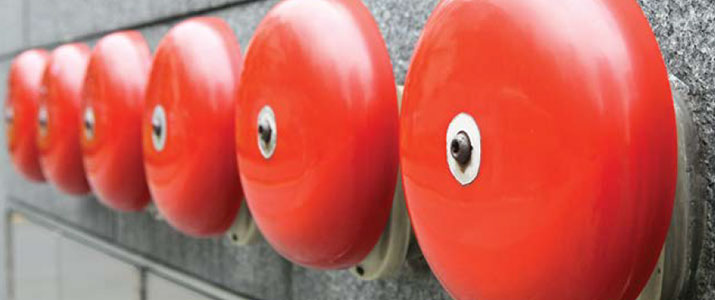
Upgrade to Video Verification
Classic burglar alarms fail to meet growing consumer expectations
- By Keith Jentoft
- Jun 01, 2013
 Most of the 30 million classic burglar alarms installed since 1970
fail to meet growing consumer expectations of what a modern
burglar alarm should be. To illustrate the concept, consider
a Ford F150 pickup truck from the same era. Assuming it is
in pristine condition, it may be a “classic,” but does a 1970 Ford meet today’s
expectations? The answer is a confident no.
Most of the 30 million classic burglar alarms installed since 1970
fail to meet growing consumer expectations of what a modern
burglar alarm should be. To illustrate the concept, consider
a Ford F150 pickup truck from the same era. Assuming it is
in pristine condition, it may be a “classic,” but does a 1970 Ford meet today’s
expectations? The answer is a confident no.
While the older model certainly provides basic transportation, consumer
expectations now demand more than that. A new Ford F150 also provides
basic transportation, as well as cruise control, heated seats, push-button fourwheel
drive, CD player and sound system, powered seats, satellite radio, rear
video camera, digital displays and interacts with a smartphone. In the same
way, “classic” alarms provide basic security, but modern alarm systems go beyond
that and interact with smartphones to deliver greater value and exceed
consumer expectations.
Upgrading 30 million classic alarm systems with interactivity to meet
growing consumer expectations is a huge opportunity for alarm dealers to
grow their recurring monthly revenue (RMR) and make their companies
more valuable.
Although the “upgrade concept” is not new, it has been limited to telephone
lines. Most of the 30 million alarm systems installed use wired telephone
lines to communicate to the central station, and consumers are replacing
phone lines with internet, VoIP and cell networks. Once the phone
lines go away, these systems are obsolete unless dealers upgrade them to IP
or cell communications.
Basic Security Only
A phone line upgrade only allows the classic alarm to continue providing basic
security. If all the upgrade does is deliver the identical service over IP or
cell network, the dealer is not meeting consumer expectations and has failed
to maximize his RMR. Consumers expect more from an alarm now than they
did in 1970. They expect interactivity that did not exist when classic burglar
alarms were installed. Consumers are looking for increased convenience and
want to arm/disarm their alarm with their smartphone and receive status reports
from the system on demand.
An alarm dealer who upgrades communications for an identical alarm
feature set misses the point, like “upgrading” a 1970 Ford from gas to ethanol
and only maintaining basic transportation. The real RMR opportunity goes
beyond telephone wires with smartphone interactivity and a modern feature
set. The ability to remotely arm/disarm the burglar alarm from a cell phone
is the single, most popular feature in new modern alarm systems, and dealers
can offer this to the existing installed base as a real upgrade for greater value
and less attrition. But remote arm/disarm is only the first step.
Dealers also can move beyond basic interactivity and also offer greater security.
While remote arm/disarm from a smartphone is an upgrade targeting
user convenience, video verification is a security upgrade that actually delivers
faster police response. At the most basic level, consumers purchase burglar
alarms so police respond when their property is broken into. As municipal
budgets shrink and police resources are cut, police response to alarms has
been decreasing and this has an effect on consumer expectations. Some police
departments now only respond to video-verified alarms and will not send an
officer to an unverified alarm. In many other municipalities, police response
is voluntary to unverified alarms.
Classic alarms only receive a Level 3 response, while a video-verified alarm
is a Level 1 and treated as a crime in progress. In many jurisdictions, a Level
1 response is less than five minutes and a Level 3 is more than 20 minutes.
Consumers paying for monitored alarm systems want the fastest police
response available, and a video-verification upgrade is an obvious value to
eliminate 15 to 20 minutes of police response time.
What it Looks Like
What does a monitored video verification upgrade look like? The easiest and
most basic upgrade is a Videofied upgrade kit as a “slave” on an existing “host”
alarm panel. The upgrade panel follows the arming/disarming of the host and
provides video verification without any changes necessary from the consumer’s
perspective. The host alarm keypad—or other arming devices and user
codes—does not change. Consumers simply continue to arm/disarm their
burglar alarm as they have always done and the video verification panel arms
and disarms as well.
The specifics of this concept from the installer’s perspective can be illustrated
with a Honeywell Vista 20 panel—a common classic alarm panel. The
alarm dealer simply wires a Honeywell 4204 relay module to the Vista 20 host
panel, then wires the relay to the arming terminals on the Videofied upgrade
panel. Once the upgrade panel is connected to the host, the dealer installs the
wireless-battery-powered MotionViewers as needed throughout the property.
When the consumer arms the Vista 20 alarm panel, the 4204 relay signals
the Videofied to arm the wireless MotionViewers; the same thing happens on
disarm. From the user’s perspective, there are no changes in terms of alarm
operation. Everything is handled by the existing host system.
This upgrade approach maximizes the value of the Honeywell host system
because all of the zones of the host—wired contacts, PIR and/or wireless devices—
are still monitored by the central station as before. The trip from a Honeywell
door contact will generate the same “classic” alarm signal from the Vista
20 and the same standard dispatch from the central station as before. At the
same time, if the intruder trips a Videofied PIR/camera, the video of the intrusion
is immediately sent to the central station by the Videofied upgrade panel
for review and dispatch as a video-verified alarm.
The central station brings the signals from both the host panel and the
upgrade panel into the same account, and central station operators treat the
alarm signals from both panels as a unified system. This means that an alarm
from an upgraded Vista 20 system can be video-verified and/or “classic” at the
central station, depending upon which sensors are tripped by the intruder.
A classic sensor, like a door contact, would generate a “classic” alarm and
standard response. Video-verified alarms occur only when the intruder trips
a MotionViewer PIR/camera, so there is an obvious incentive to install sufficient
PIR/cameras to maximize the impact of video verification.
A mobile app enables smartphone interactivity with the Videofied upgrade
panel that brings interactivity to the entire system. The Videofied upgrade
panel uses the IP and/or cell networks to communicate to the central station
and can be configured to deliver smartphone interactivity to the consumer. A
smartphone app uses these same IP/cell networks to allow the consumer to
arm/disarm their alarm system from their cell phone.
In this scenario, the upgrade panel actually arms the host. The output of
the panel is connected to the key-switch arming terminals on the host panel
to enable the remote arm/disarm by cell phone. The smartphone app also allows
the consumer to remotely “look-in” through the PIR/camera and makes
a real-time request for a video clip or a photo from any MotionViewer in the
system. This convenience feature is in addition to the greater security provided
by a monitored video alarm, but the look-in feature is only available to
the consumer and not the central station. The central station monitoring is
limited to the alarm signals/videos.
What It’s Worth
What is an upgrade worth in terms of RMR? As stated earlier, classic alarms
provide basic security, but modern alarm systems, in addition to providing
basic security, also interact with smartphones to deliver greater value and exceed
consumer expectations. An upgrade transforms the classic system into
a modern alarm with interactivity, video verification and remote look-in to
the cameras.
The average RMR for new alarm systems with this kind of feature set is
more than $50 per month. The average RMR for most of the classic alarm systems
in the field is closer to $30 or even $20. Why this difference? Consumers
have developed higher expectations for a modern alarm system and are willing
to pay more for interactivity, greater security and the expanded feature set.
The goal of the upgrade is not to continue with basic security after the phone
wires have disappeared. The reality is that the millions of alarm systems already
installed are a massive market for alarm dealers to collect an additional
$20 of RMR as they move their classic accounts to an upgraded system.
The incremental RMR is only part of the benefit to the alarm dealer. The industry
has proven that accounts with interactive alarms and expanded feature
sets are much more “sticky” and have far lower attrition than classic accounts.
Lower attrition because of interactivity and feature sets is making a difference
in company valuations. The financial markets that fund the alarm industry
have already made the decision that the multiples paid for classic accounts
are less than the multiples paid for accounts with the new alarm systems. The
incremental value in company valuations exists because exceeding customer
expectations means lower attrition. The bottom line is that upgrading classic
burglar alarms to interactivity, video verification and look-in means greater
value to the consumer and greater valuations for the alarm company.
This article originally appeared in the June 2013 issue of Security Today.